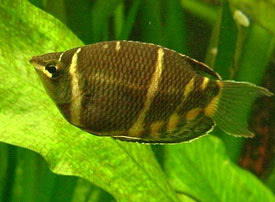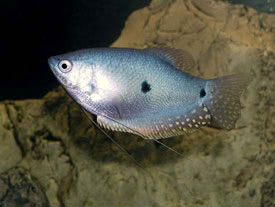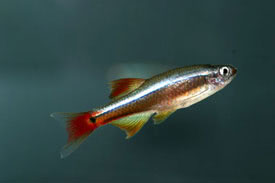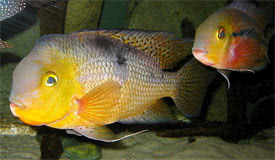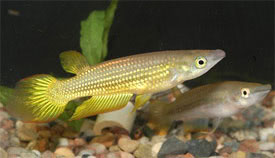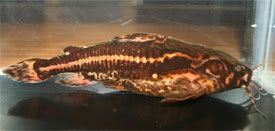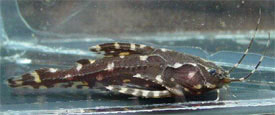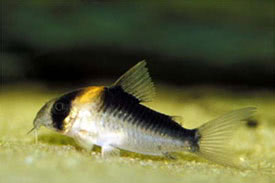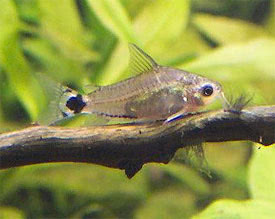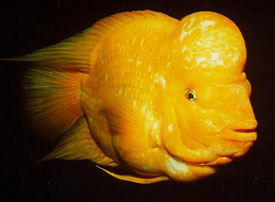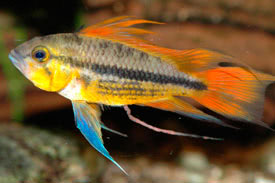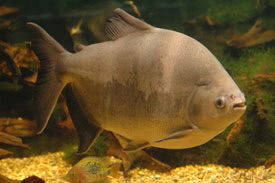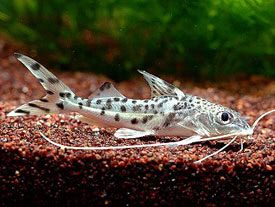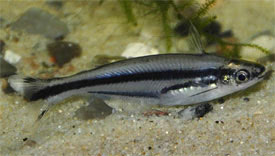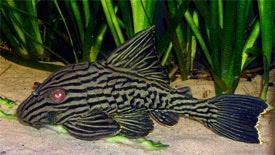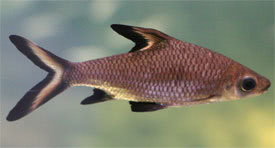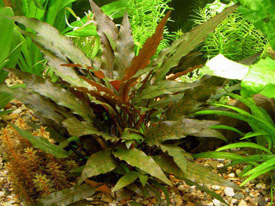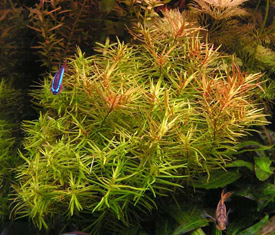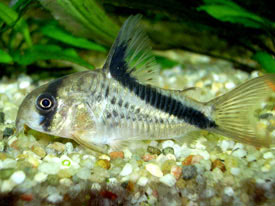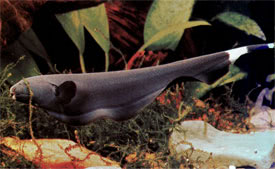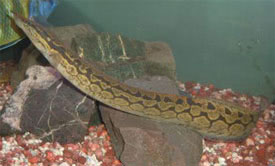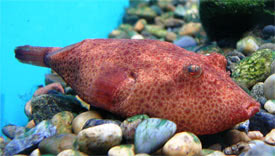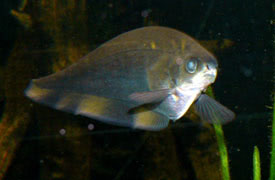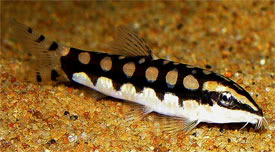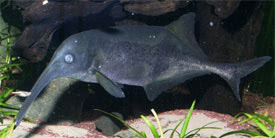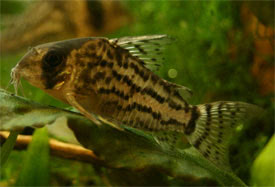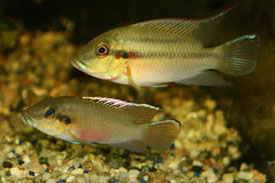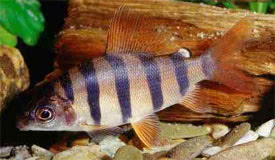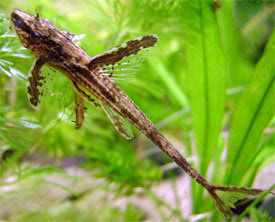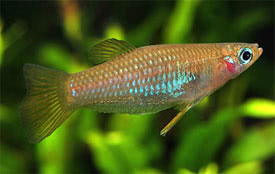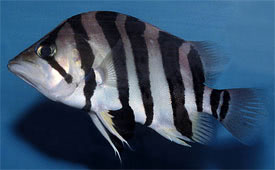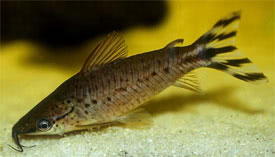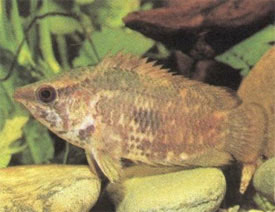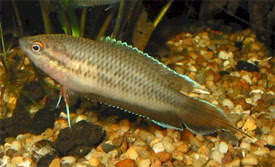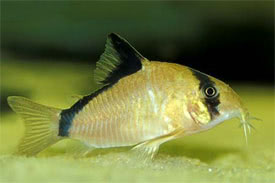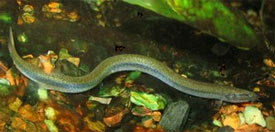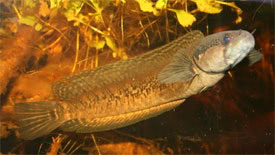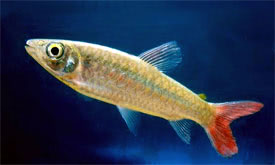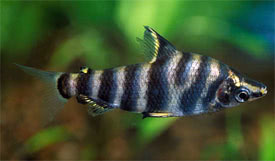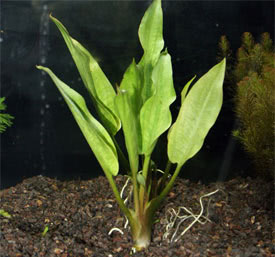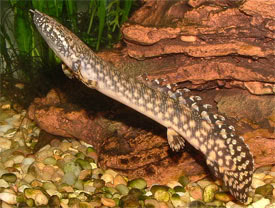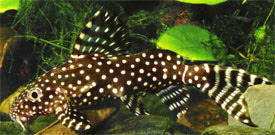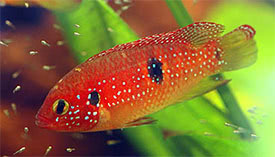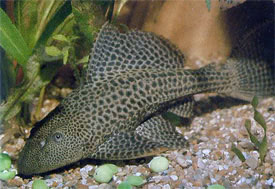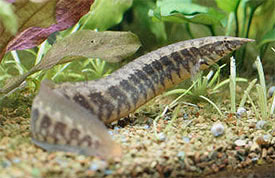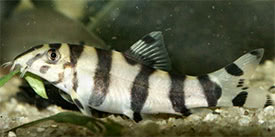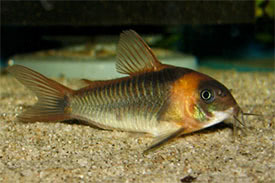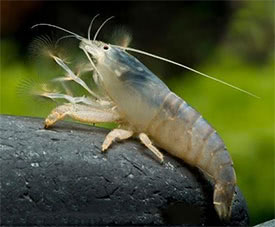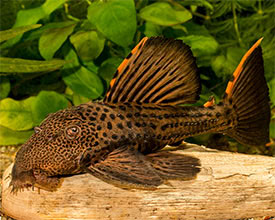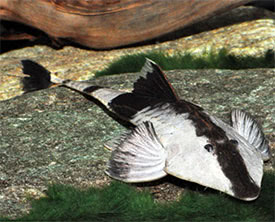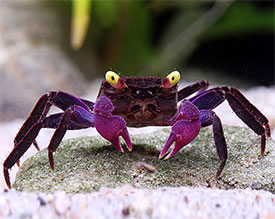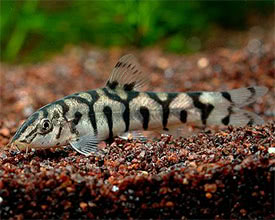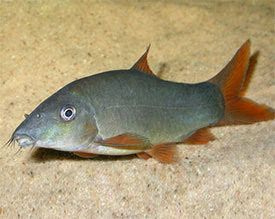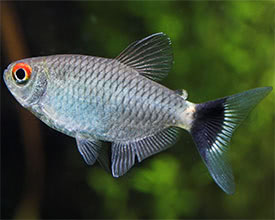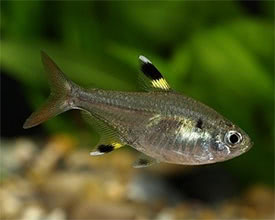
 Magyarul / Hungarian
Magyarul / Hungarian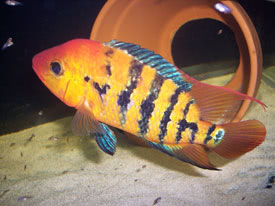
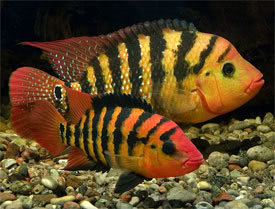
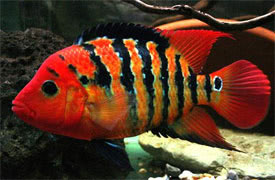
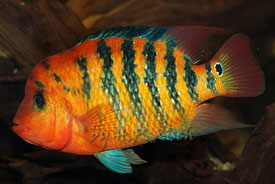
- Scientific name: Cichlasoma festae
- Common name: Red Terror, Festa's Cichlid
- Synonyms: Heros festae, Nandopis Festae, Amphilophus Festae
- Group: Cichlids
- Habitat: South America; western Ecuador
- Size: Male: 50 cm, Female: 30 cm
- Biotope: In the Guayas River system, predominately inhabit the shores.
- Social behavior: Territorial; the species is very aggressive and quarrelsome. The animals are predators and dig during spawning time. Best kept in a species tank.
- Diet: Carnivorous; live foods of all kinds; small fish, insects, insect larvae, snails, worms, chopped meat, krill, flake and tablet foods.
- Breeding: Quite hard
- Tank: Minimum 500 litres.
- Population: 1 pair for 600 litres
- Decoration: Hiding places, caves and shelter of stones and roots should be available. Since Cichlasoma festae digs, stone structures should always be very stable by basing them on the bottom pane of the aquaria. Use a thick layer of fine-grained gravel for substrate. Perform regular water exchanges (every 2 weeks 1/3 of the tank).
- Temperature: 23-28°C
- pH: 6,5-7,5
- Hardness: 2-18 NK°
- Lifespan: 10-12 years
Description: The body color varies greatly depending on the sex and age of the fish. Adult males have a light green to iridescent green body with six to eight light blue to black, transverse stripes. The belly and the throat is pink. The dorsal fin is bright blue and the last few rays are violet. The anal and caudal fins are violet-pink in color, and the pelvic fin is sky blue. Females, during spawning, are bright fire red. The body is marked with six to eight, transverse stripes. The fins are also bright red, and the dorsal fins has a large black spot. The front rays of the dorsal fin are black. A black marking runs from the forehead to the eye. At non-breeding times, the female has a sliver-red body color and red fins, with the alternating black stripes.
Sexual dichromatism occurs from 10 cm length. Males have a number of sky blue dots on the unpaired fins; dorsal and vental fins are not dark black. Females do not have dots on the unpaired fins, and the hard-rayed part of the dorsal fin and the pelvic fins are pitch black. Cichlasoma festae prefers to spawn on hidden substrates. Offer the animals flat stone plates located under rockwork and/or roots. Part of the spawning preparations is a digging phase during which several deep pits are dug. The hatched larvae are placed in the pits. Spawning occurs after the preparations are finished and an extensive courtship. A hard substrate is used where the adhered eggs are fertilized by the male. Up to 3000 l-type eggs are laid; the eggs of Red Terror are larger than most Cichlasoma eggs. The female guards the spawn while the male defends the territory. At 26 °C (79°F) the larvae begin to hatch after a good 3 days. They are freed from the egg shells by the mouth of the female and deposited into one of the prepared pits where the female continues to guard them. After 5-6 days, the young are free-swimming and are guarded by both parents. Feed the young with Artemia nauplii, Cyclops, sieved water fleas and crumbed flake food. If not kept in a roomy tank, the fish will stop growing early.













